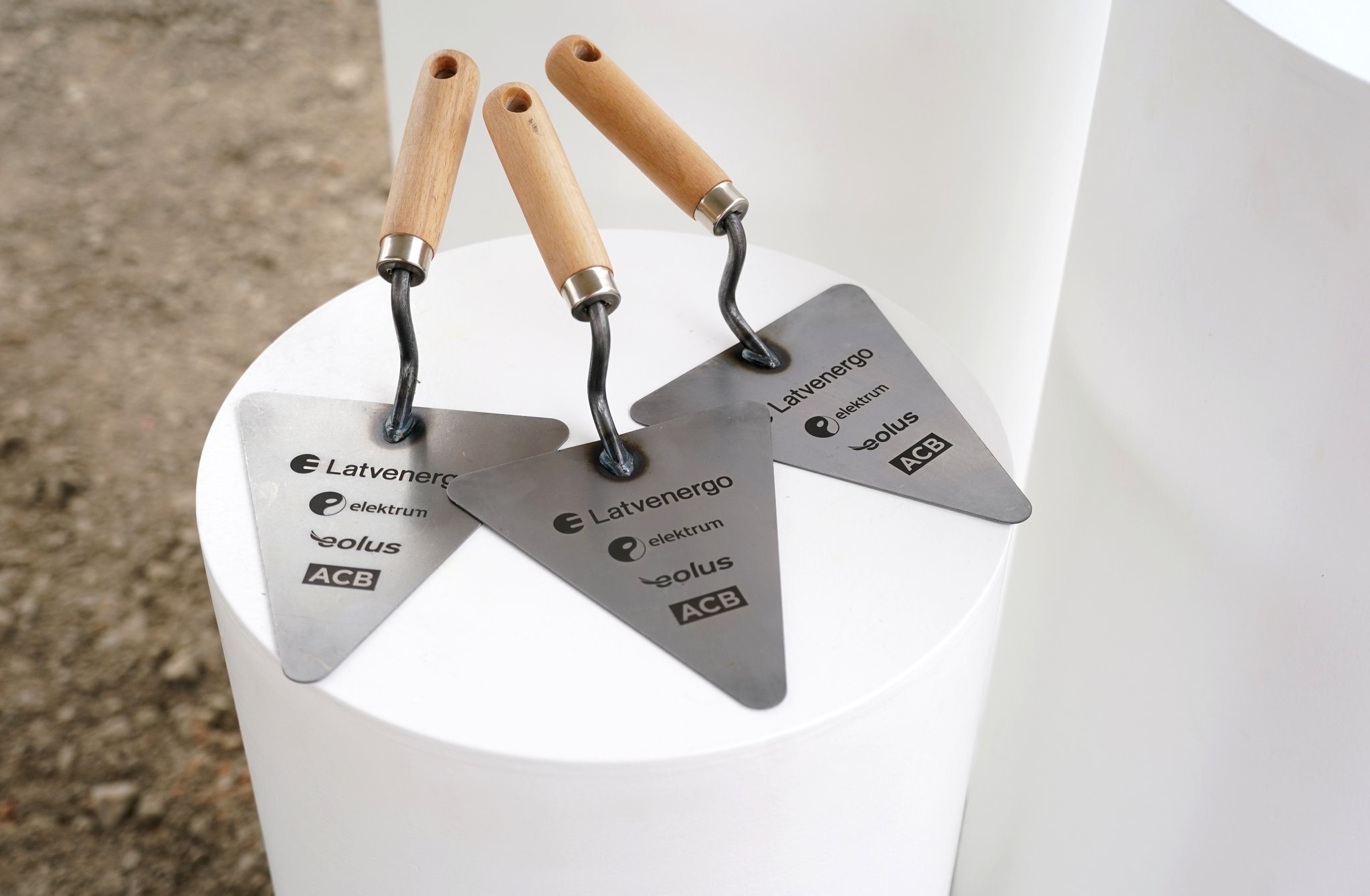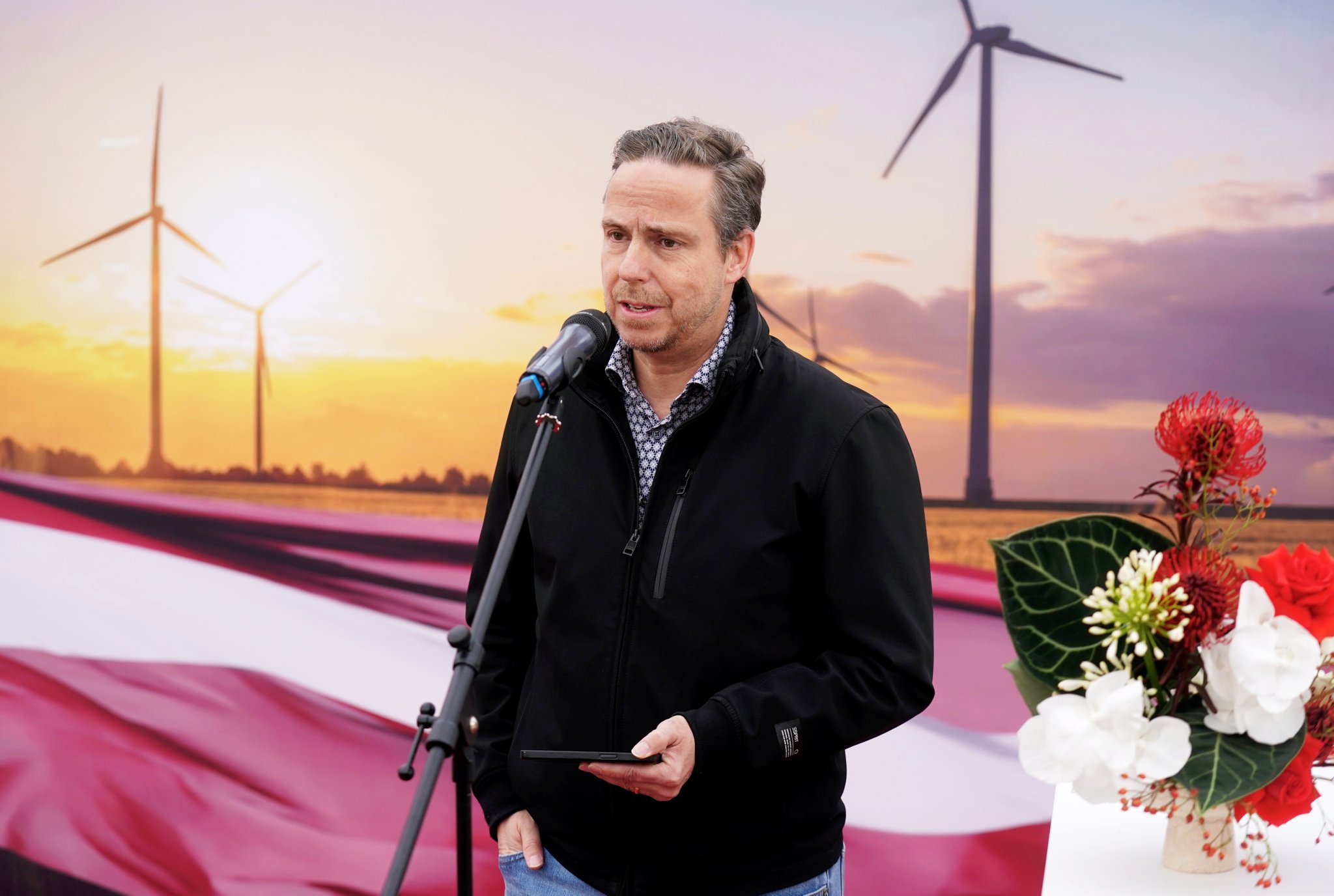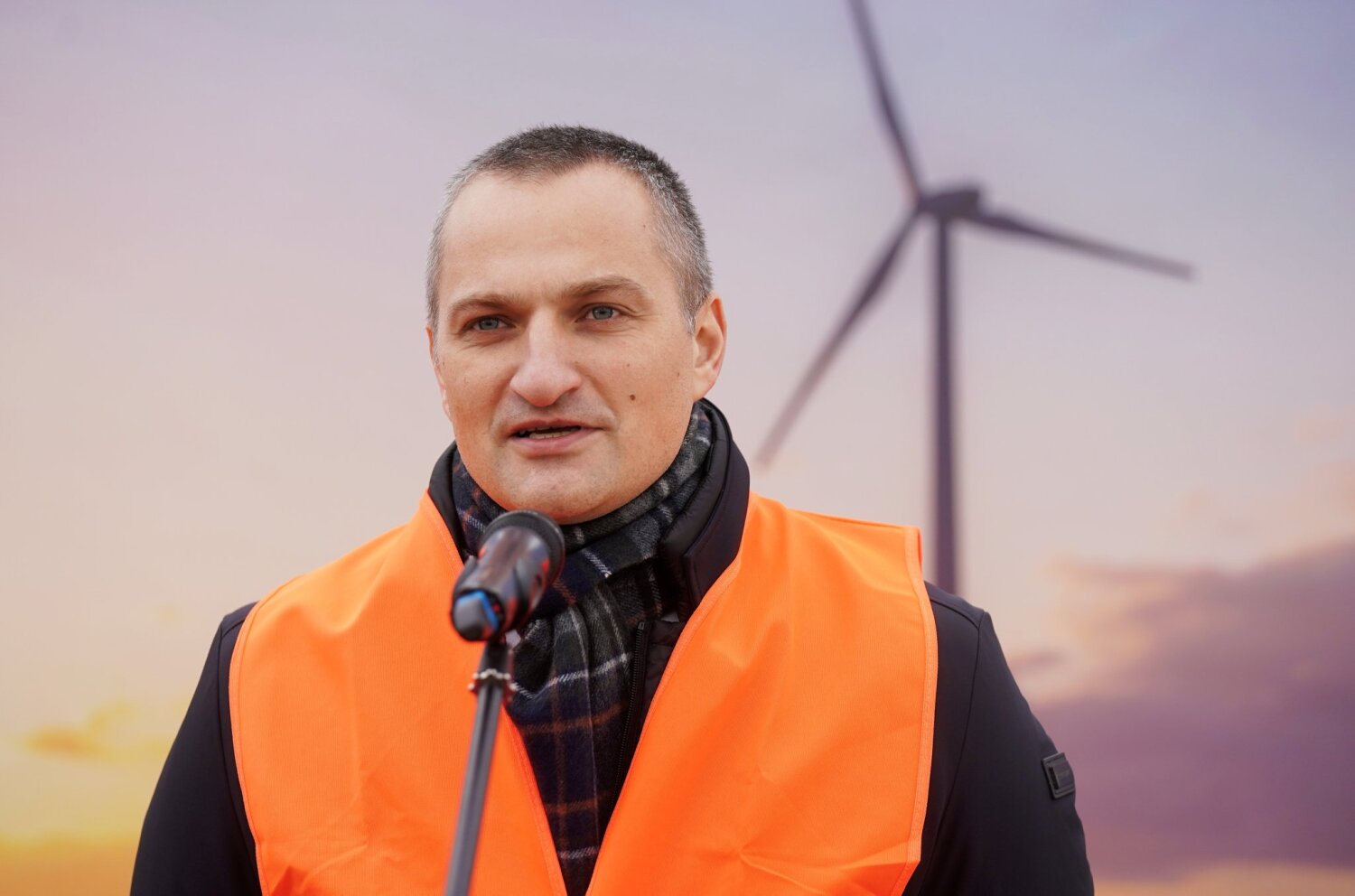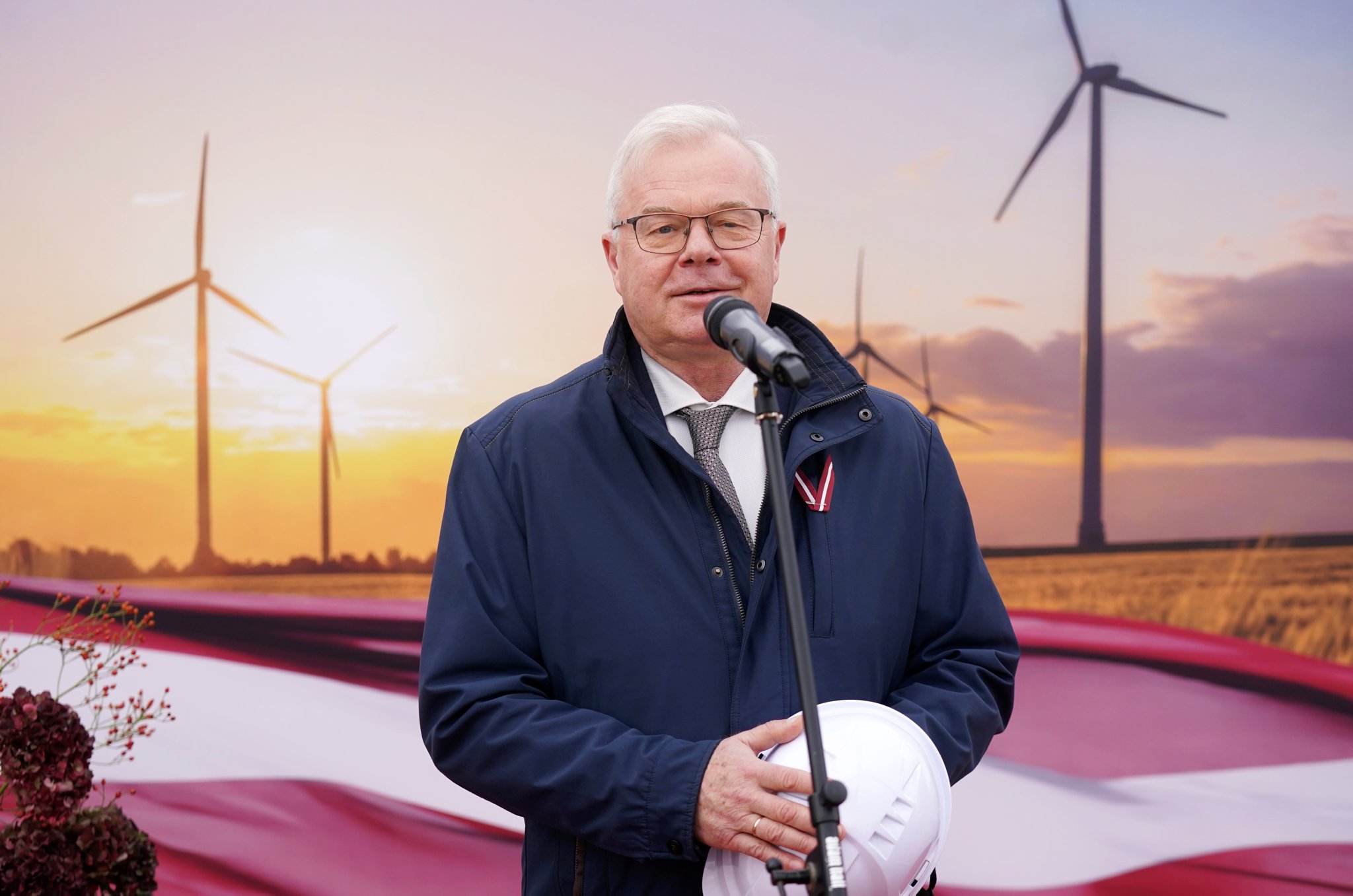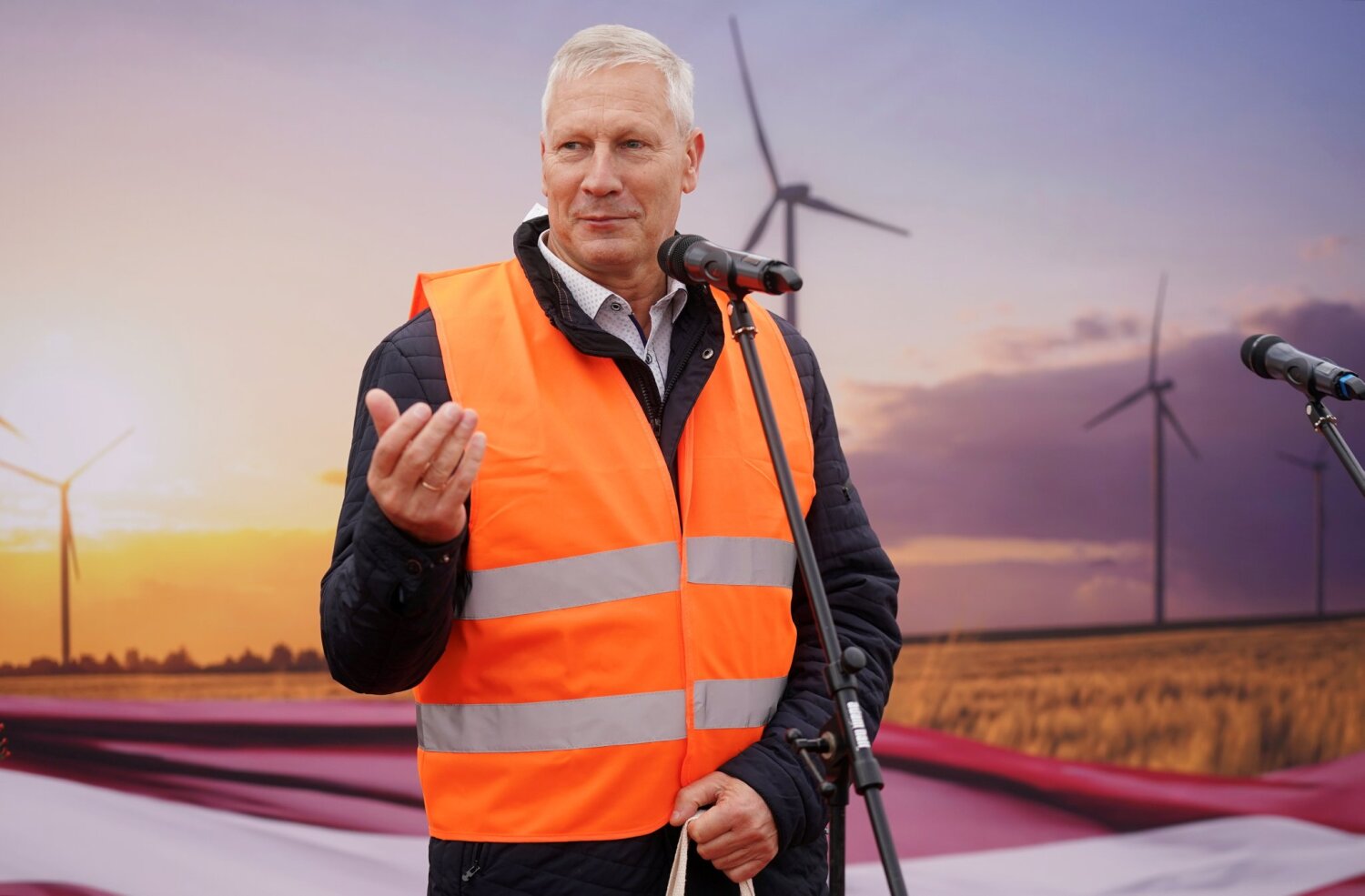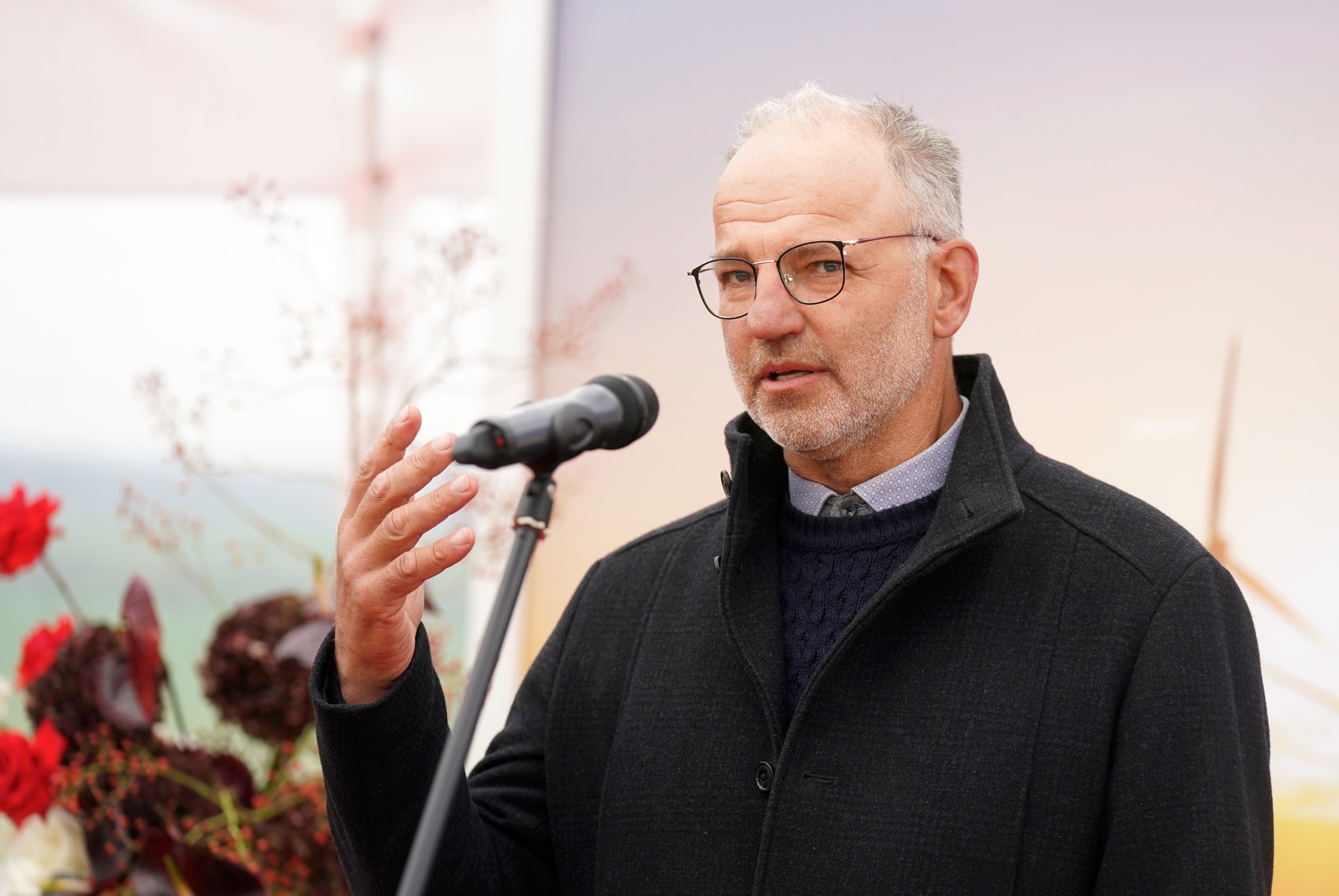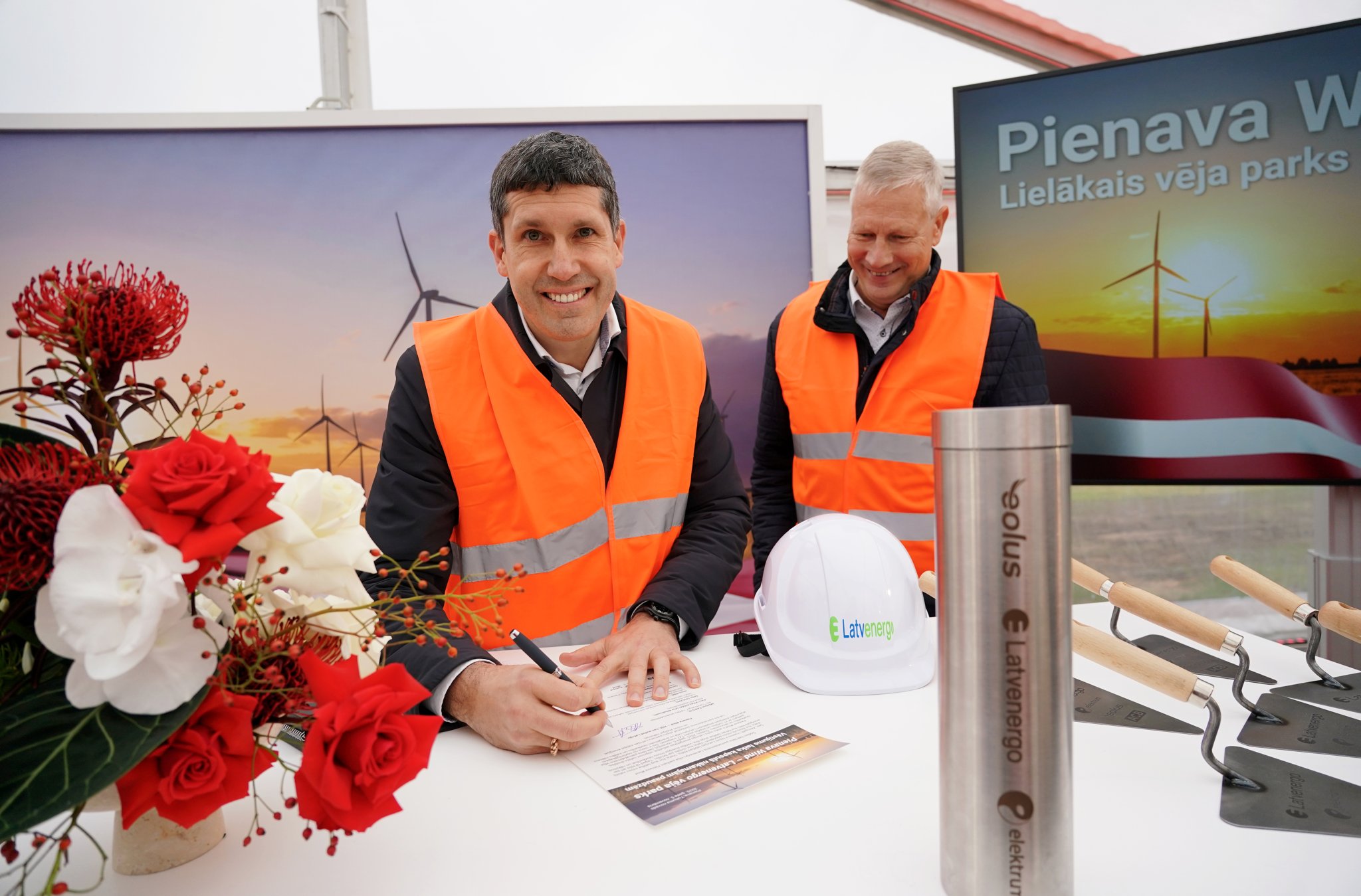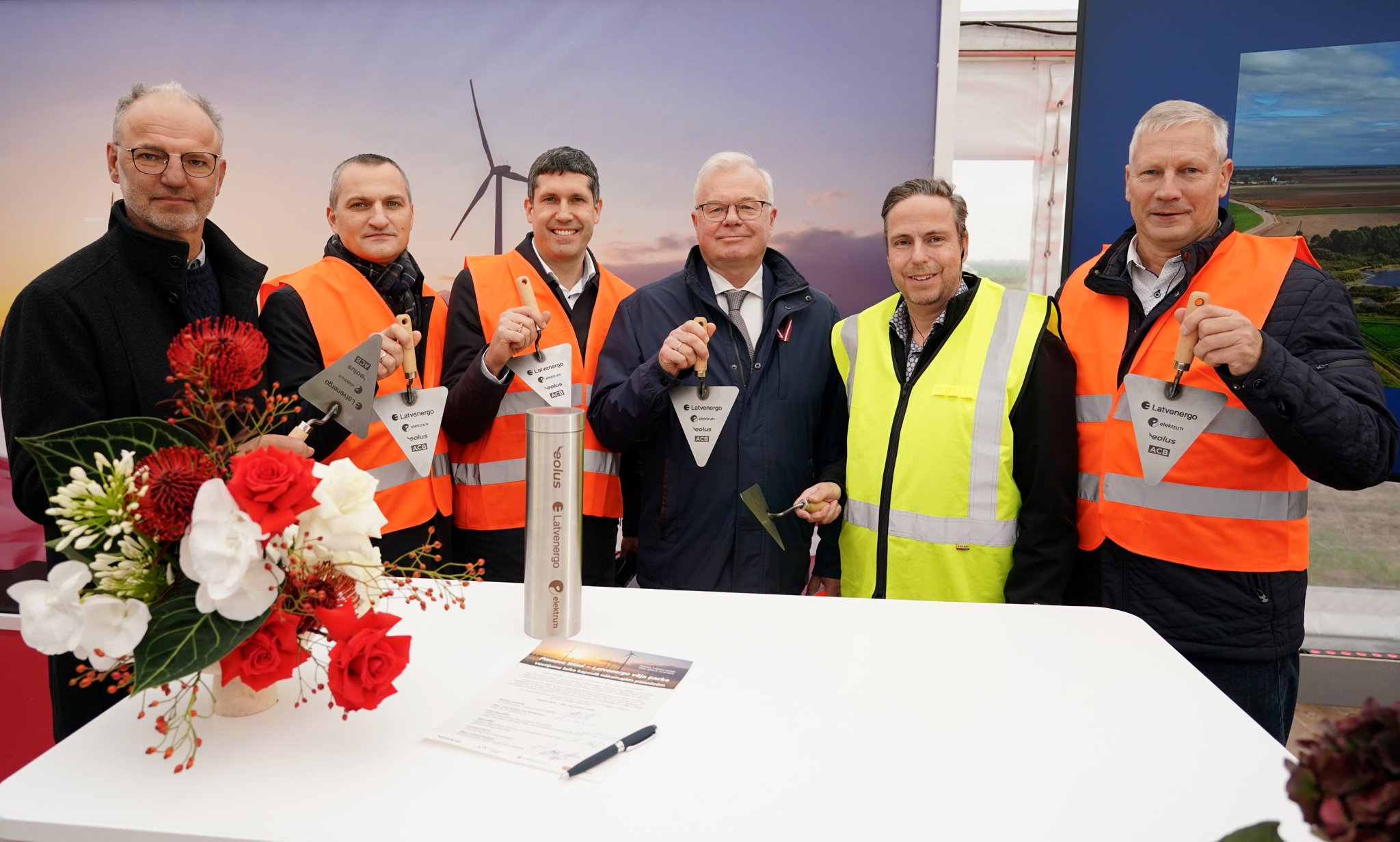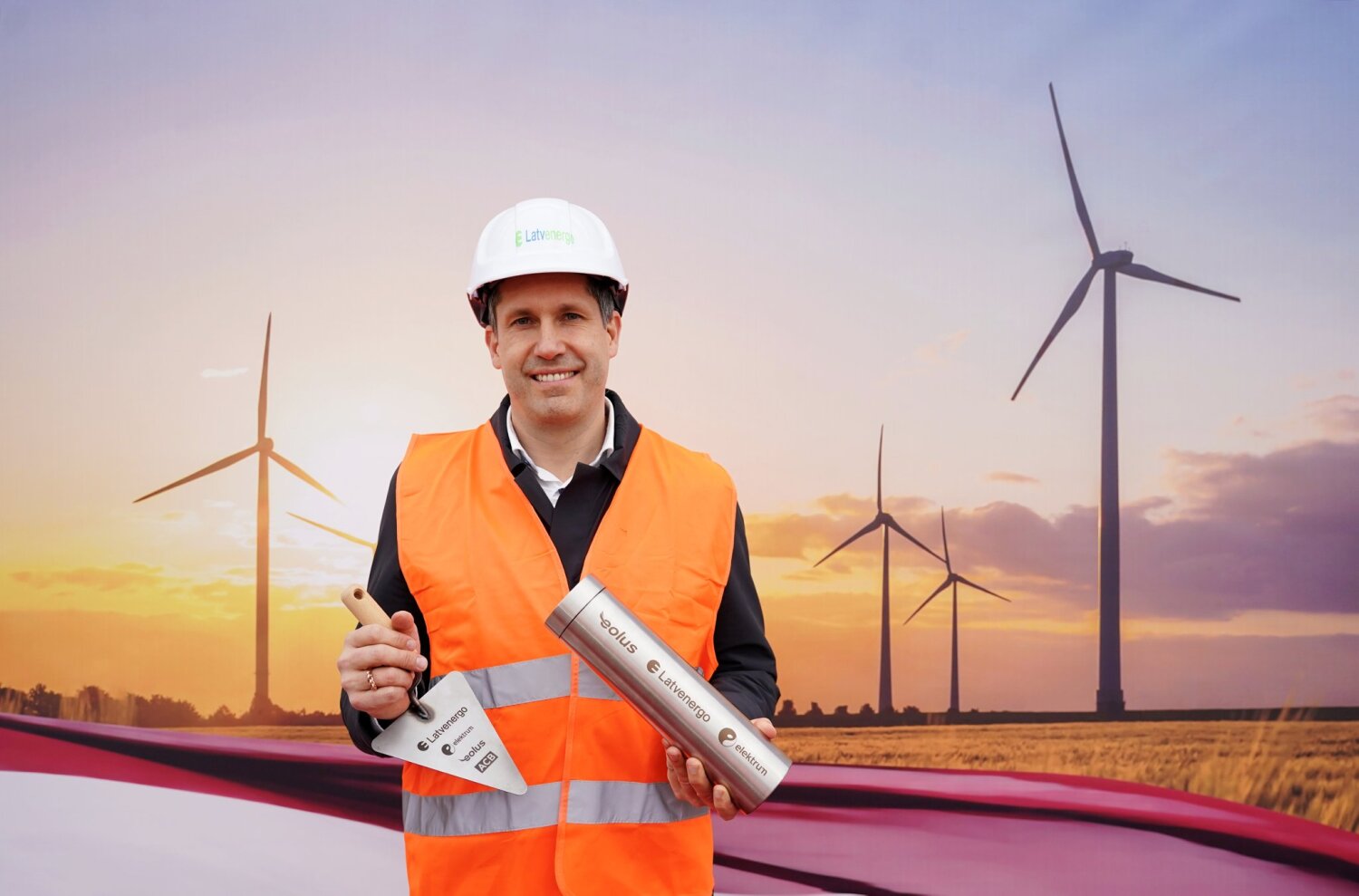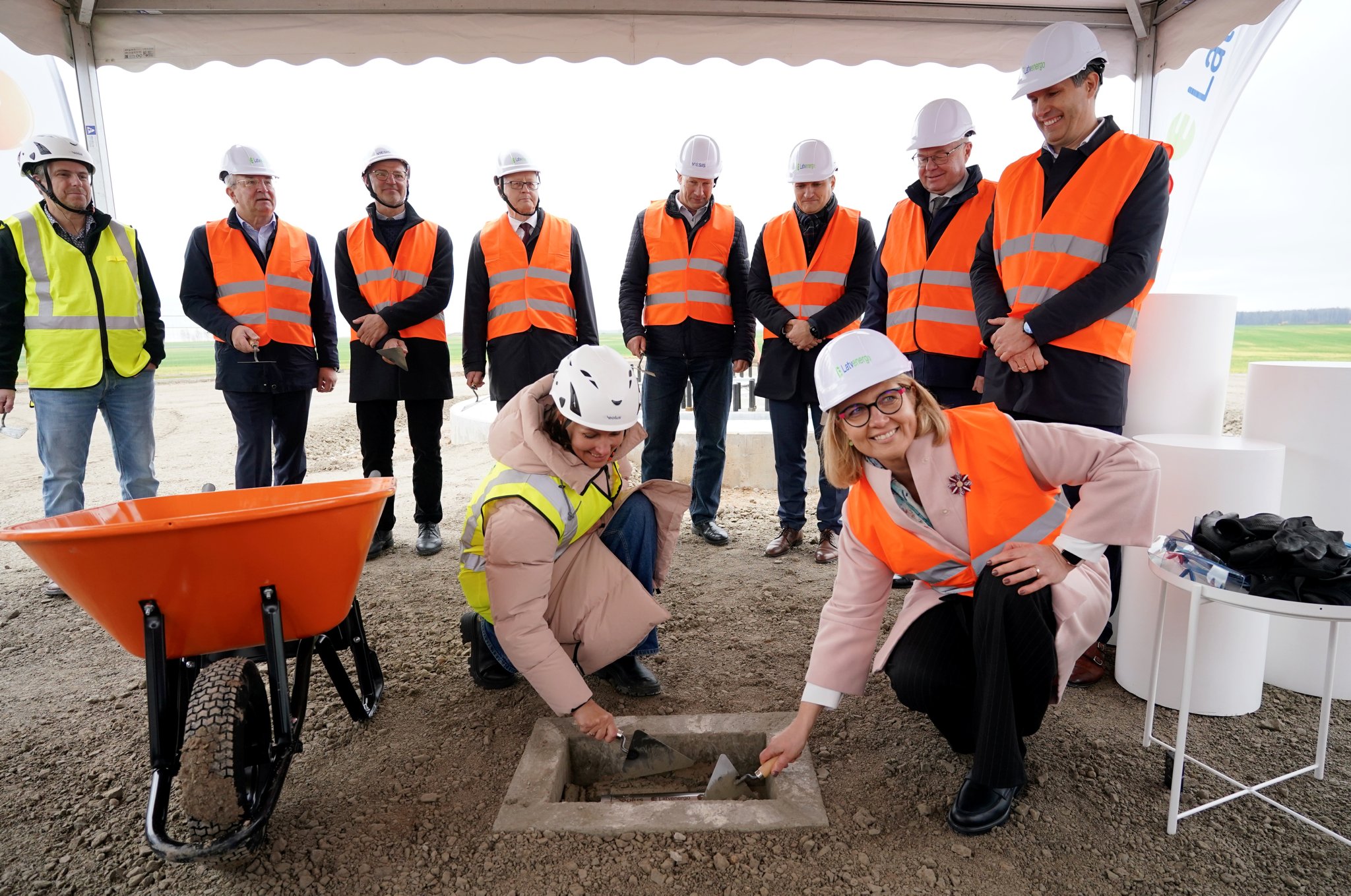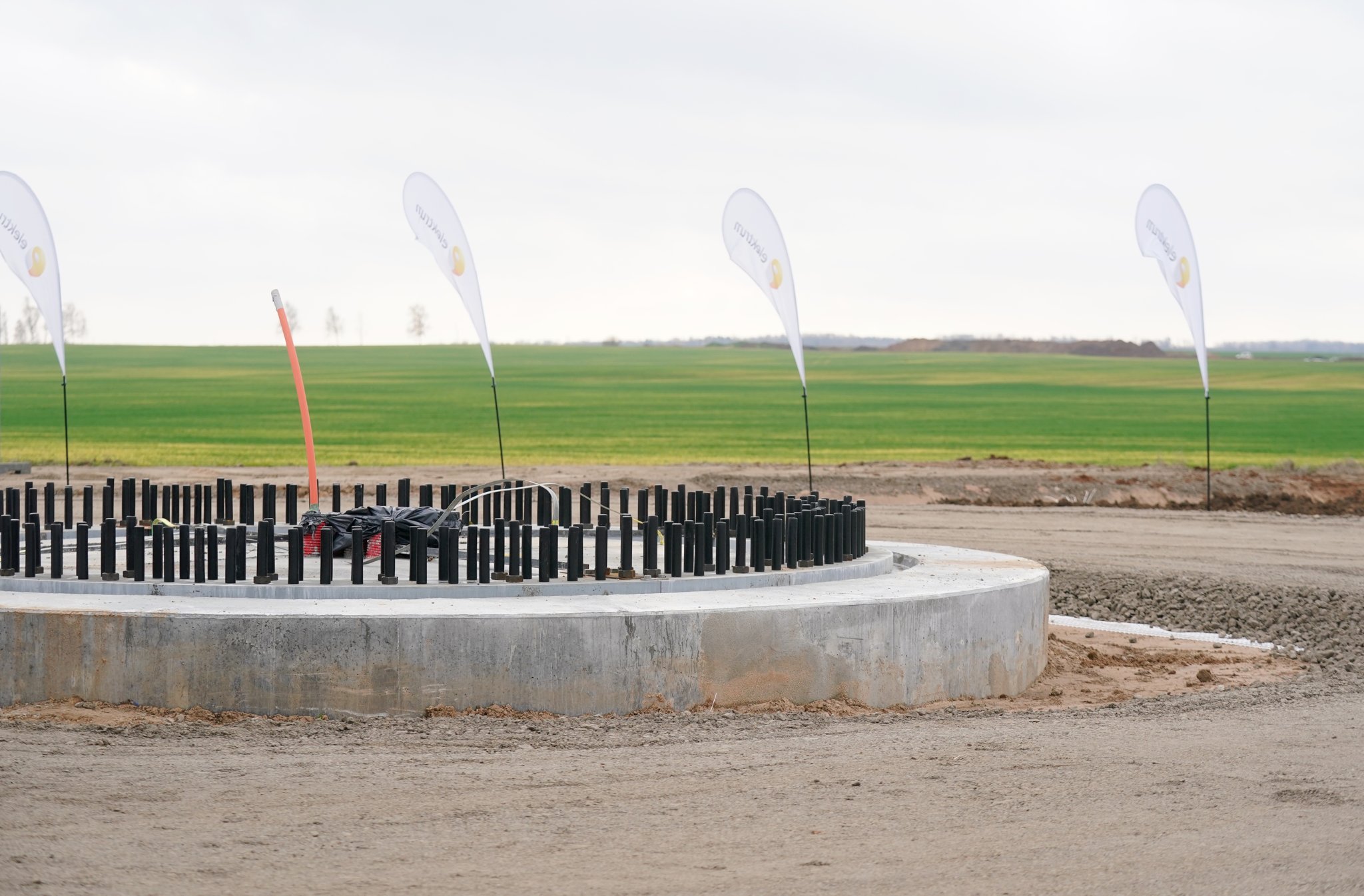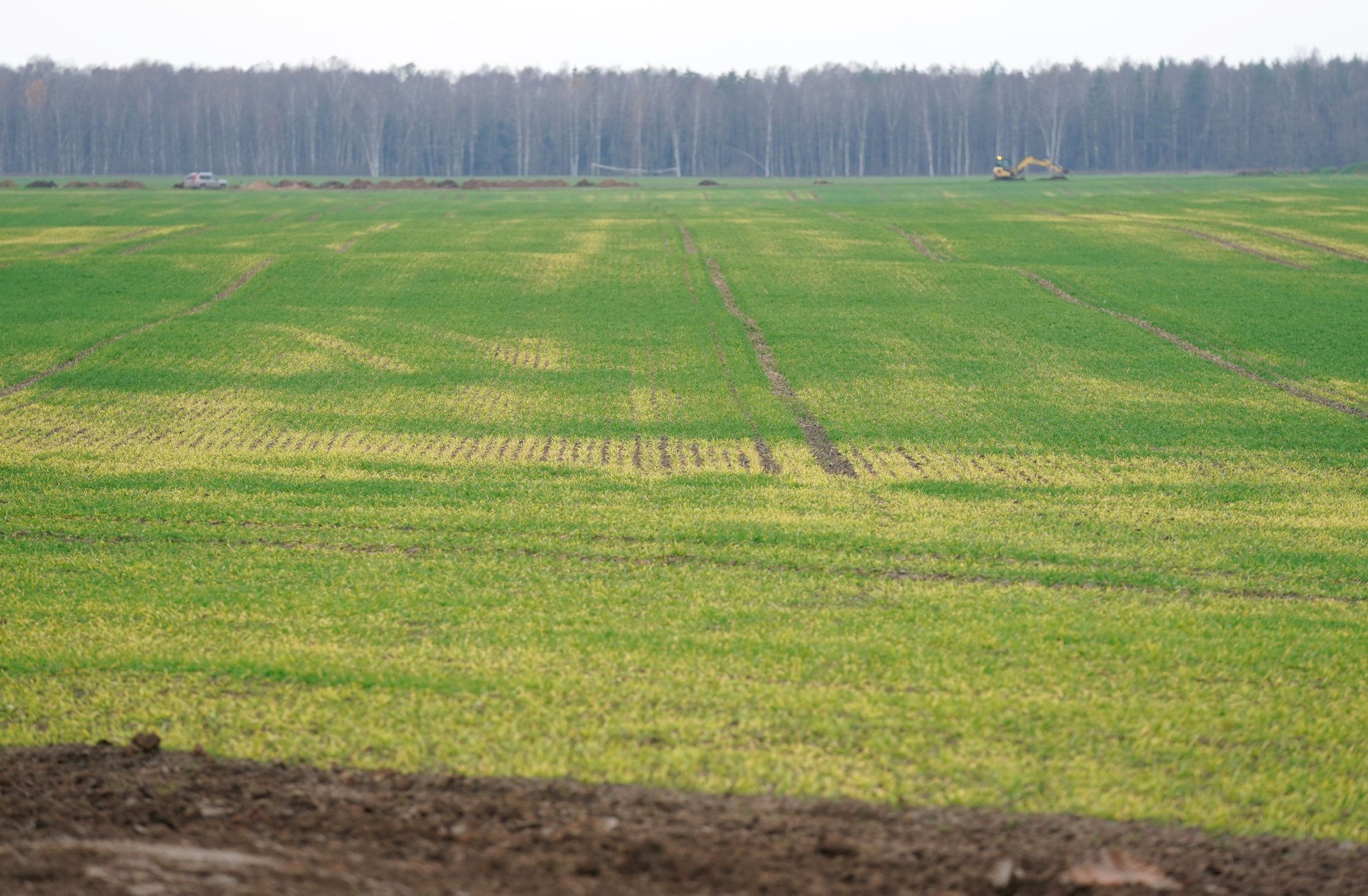Pienava Wind – Latvia's Clean Energy Granary
November 5, 2025
Today, on 5th November, the foundation stone is being laid for the largest wind park in Latvia – Pienava Wind. The wind park is located in Tukums municipality and will feature 21 turbines with a total capacity of 147 MW. While fields of Zemgale provide a third of Latvia's grain and serve as our grain granary, the wind park Pienava Wind will be a significant contribution to Latvia's energy sector, and together with Laflora Energy it will transform Zemgale into our energy granary as well.
Today, the foundation stone has been ceremoniously laid for the Pienava Wind park – one of the most significant renewable energy projects in Latvia. The wind park is located in Zemgale, Tukums municipality, and it is planned to install 21 Nordex wind turbines with a total capacity of 147 megawatts (MW). The project development was initiated by the Swedish company Eoluand its representative in Latvia, and following the acquisition, it is being continued by Latvenergo AS until the completion of the construction works.
Zemgale's fields have traditionally been Latvia's grain granary – a third of the country's grain is harvested in this very region. Now Zemgale is also becoming an energy granary, where clean local energy grows in the fields alongside grain. Pienava Wind and Laflora Energy wind parks form a new stage in the development of Latvia's energy sector – balancing the production portfolio and strengthening the country's energy security.
Both parks also significantly stimulate the local economy in the long term both directly and indirectly, since in addition to affordable and green energy, the wind park also provide a positive benefit to Tukums and Dobele municipalities and nearby residents, making an annual payment of more than 350,000 euros. As Pienava Wind is being built on land owned by farmers, where grain is still grown, thus combining the park infrastructure with grain farming in a novel way.
It is anticipated that wind energy generation at Pienava Wind will begin as early as the first half of 2027, providing a significant contribution to Latvia's energy independence and movement towards a greener future. The total planned construction investment into Pienava Wind amounts to approximately 215 million euros.
Mārtiņš Čakste, CEO of Latvenergo AS: "We are proud that Latvenergo continues to grow Latvia's strength – both literally and symbolically. Where Zemgale grows grain, we grow energy. Together, they are two pillars for our country, independence and security. To continue with the metaphor, this is the year of sowing when Pienava Wind, Laflora Energy, Aizpute solar park and projects in Lithuania are being developed – we shall reap the harvest from them for everyone's benefit in the coming years, and I believe that they will deal with the weeds of disbelief and the desire to obstruct the country's growth, competitiveness and public welfare."
Per Witalisson, CEO of Eolus: "The Pienava wind park project began in 2013 with conclusion of the first agreements with landowners. Since then, we have purposefully progressed towards our goal, and today we are delighted to see the first turbine foundations. As project managers, we continue to work on the development to ensure the wind park is constructed within the specified timeframe and becomes a significant contribution to Latvia's renewable energy development. It is expected that the park will produce approximately 500 GWh of electricity annually, providing energy to thousands of households. We thank all our partners – landowners, Tukums and Dobele municipalities, the Ministry of Climate and Energy, the local community and other collaboration partners for their support and cooperation!"
This is a significant step in implementing the Latvenergo Group strategy – by early 2027, the company will manage approximately 1150 MW of renewable energy source (RES) capacity in the Baltic region. This will enable the creation of a diversified, geographically balanced RES portfolio that strengthens Latvia's and the region's energy security and competitiveness.
